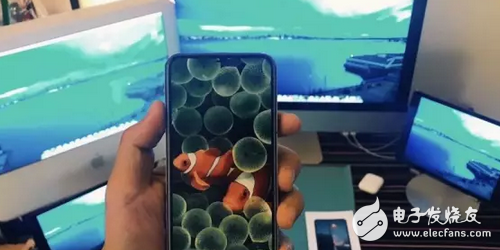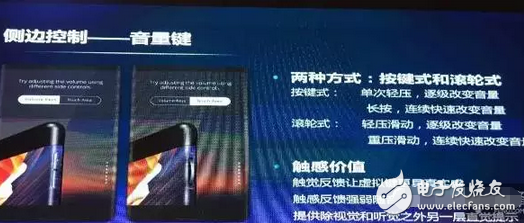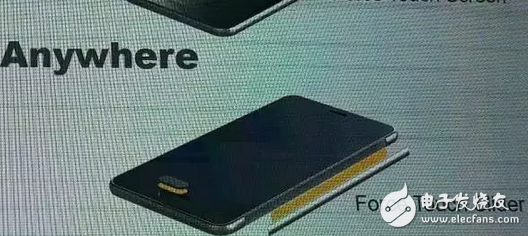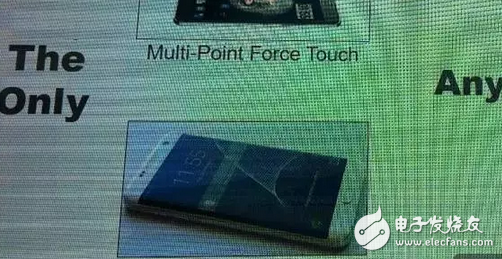Samsung is currently the world's largest manufacturer of small-size OLED display panels, with a market share of 95% in the field of mobile devices. Samsung's mass-produced OLED panels are used in its own Galaxy line of smartphones, which account for more than 56% of capacity, including the Galaxy S-series flagship and A-series mid-range models.
Among Samsung's customers, Apple is currently the largest partner, and the rest of the handset manufacturers who have placed orders are OPPO, VIVO, etc. The more customers have more competition for order demand, the more productive capacity becomes a problem. In the case of Samsung's self-sufficiency and Apple's big orders, Samsung's OLED display will only have about 50 million units of production capacity for other mobile phone manufacturers in the next year.
However, Samsung does not seem to think that there is a problem with the supply. Recently, Samsung has begun planning the production line of the seventh-generation OLED panel, which will be mass-produced as soon as possible in the second quarter of next year. Of course, Samsung is not planning a new production line for pressure to increase production capacity, but considering that more and more panel makers are investing heavily in expanding their production lines, and they are currently on the road to speeding up the pursuit of Samsung. It is a big problem.
The most striking example is LG's action. Some time ago, it was reported that Google is planning to invest at least 1 trillion won (about 880 million US dollars) in LG Display to help increase the capacity of smartphone OLED screens. There are mobile phone manufacturers vying for orders for OLED screens. And with OLED production capacity becoming more and more abundant, whose technology is more attractive, customers are more willing to place orders.
At present, most display panel manufacturers still use the sixth-generation OLED panel. It is said that the seventh-generation OLED panel in Samsung plans will contain many types, including foldable OLED screen, chip-on-plasTIc OLED screen and 800ppi pixels. Density super resolution OLED display. But by naming, these types of OLED screens are very attractive to customers.
The chip-on-plasTIc OLED screen is another foldable OLED screen. The only way to make a folding screen is to use a glass substrate instead of a glass substrate. The bending rate and durability are even more amazing. The 800ppi pixel density screen refers to the resolution of 3480&TImes; the 2,160-pixel 5.5-inch screen, there have been rumors that Samsung may be used in the next generation of models.
Having said that, the demand for global OLED panels is expected to climb more than 44% this year. The supply of mobile OLED display panels will face a shortage in 2017. Although many panel makers have made significant investments, this year is not enough to offset major mobile phone manufacturers. The demand will wait at least until 2018. If Samsung can speed up mass production of the seventh-generation OLED panels, it will not be a big problem to maintain dominance by 2020.
By breaking the news, we already know that the OLED iPhone will adopt a true full screen design, cancel the Home button, and the Touch ID is integrated into the screen.

About the iPhone There will be a lot of news about the three models this year, and we have already known through the news that the OLED iPhone will adopt a true full screen design, cancel the Home button, and the Touch ID is integrated into the screen. The screen is said to be 5.8 inches. Samsung OLED screen, while the front camera is hidden, and the front and back of the fuselage are 2.5D glass, the border is very narrow.
However, we may have heard that the OLED iPhone will adopt an innovative full-screen, no-button design that eliminates all physical buttons. Now the problem is coming. Is it possible to physically turn on or adjust the volume after there is no button or volume button? In response, a recent industry analyst named Sun Changxu, after attending the 2017 AAC Technology New Technology Exchange Conference, got the answer on how to operate without a button phone.

How to adjust the volume of a mobile phone without a button?
The analyst said, "It turned out to be a 3D touch based on hapTIcs touch feedback technology. It realizes the real button feel on the border. When your hand slides up and down the phone frame, it is like sliding an old gear button. I experienced it on the spot, and the feedback to you was so vivid. The technician explained that the volume control can be fixed in a certain area or on the entire phone frame."
How to achieve boot when there is no button?
The analyst said, "It's also a 3D touch based on haptics touch feedback technology. Use your hands to hold the frame and use different strengths to turn it on and off. The technician explained that in order to prevent an emergency, it will also be on the screen. There is an alternate solution on the screen, such as the fingerprint button on the bottom of the screen. However, the fingerprint is not a physical button, it is a virtual button under the glass, this is the case when the iPhone 7, but he passed haptics The touch feedback function gives everyone the feeling of a real button. Although the iPhone 8 will use optical fingerprints, it is still not certain, but the fingerprint must be a virtual key, not a real button."
The technician told the analyst, "You can judge whether the fingerprint key is a real button. When you turn it off, if you can press it, it is the real button. If you press it, there is no response. It is a virtual button. It gives you feedback. Haptics is implemented, only when you turn it on. You can understand the difference between the iPhone 6 and iPhone 7 fingerprint buttons."
Therefore, for the next generation iPhone, there will be no physical buttons for the entire border and the bottom, which is technically achievable. With AAC's 8x15x3.5 large linear motor, you can drive the 3D touch on the entire screen and border.

OLED iPhone is likely to be postponed
The problem now is that if Apple wants to push the perfect experience of eliminating innovation after pressing the button, it is not an easy task. Sun Changxu said that it is not impossible to rumor that "the problem of the new 3D touch yield rate is delayed".
“Because the new generation of iPhone uses a buttonless border and full-screen structure, the whole screen is changed, and 3D touch needs different pressures to achieve multiple functions. When your finger is pressed on different parts of the screen, Pressure perception is very different from previous products, so some algorithms and structures have to be redesigned. The main problem is pressure sensing. AAC's haptics motor has no problems," the analyst explained.
In short, Apple is unlikely to confirm any technology being developed, including which pressure sensing film to use. However, Sun Changxu’s analysts received the news that Nutri is the only company that can support hyperbolic OLED screen pressure sensing films.

Semiconductor Moly
Semiconductor Moly
YANGZHOU POSITIONING TECH CO., LTD. , https://www.yzpst.com